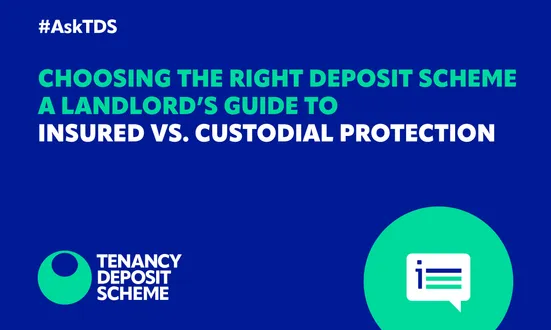Flooding can cause significant damage to properties, and when it’s due to extreme weather, the effects can be devastating. For landlords and letting agents, understanding the responsibilities and how to manage flood damage is crucial to ensure the property is repaired quickly and disputes are avoided.
While flooding is not always preventable, being prepared and knowing how to handle flooding can save time, money, and stress. In this blog, we’ll walk you through the key responsibilities, practical tips for managing flood damage and point to flood resources, ensuring you can deal with any aftermath effectively.
Who is responsible for flood damage?
In the unfortunate event of a flood, it’s essential to know who is responsible for what, so you can take the right steps quickly.
When it comes to flood damage in rented properties, there are a few key points to consider. Generally, the responsibility for repairs and maintenance falls on the landlord, especially for structural damage caused by flooding. However, certain aspects of damage, like tenant negligence (e.g. causing and not reporting leaks), might shift responsibility onto the tenant.
Landlord’s responsibilities
- Structural repairs: Landlords are generally responsible for repairing any structural damage caused by a flood, including damaged walls, flooring, and roofs.
- Ensuring habitability: Landlords are legally required to ensure that their rental properties are fit for human habitation under the Landlord and Tenant Act 1985. If flooding renders the property uninhabitable, landlords must take prompt action to carry out necessary repairs. While landlords are generally not obligated to provide alternative accommodation, tenants have the right to contact their local council for assistance. Under the Housing Act 1996, local authorities have a duty to provide accommodation to individuals who are homeless due to an emergency, such as flooding. For more detailed guidance, tenants can refer to resources provided by organizations like Shelter and Citizens Advice, which offer comprehensive advice on rights and responsibilities in such situations.
- Floodproofing: Landlords are expected to take reasonable steps to minimise the risk of flooding. This includes improving drainage, supplying sandbags if in a high risk area, and ensuring the property is adequately protected from potential flood damage.
Tenant’s responsibilities:
- General care: Tenants are responsible for taking reasonable care of the property. For example, they must avoid actions that could increase the likelihood of flooding, such as blocking drains.
- Reporting issues: Tenants must report any signs of water damage or leaks as soon as they appear.
- Responsibility for contents: While landlords are responsible for structural repairs, tenants are responsible for their own belongings. Flood damage to personal items is typically not covered by the landlord’s insurance.
Tips to prevent and alleviate flood damage
While extreme weather is often unpredictable, there are steps landlords can take to reduce the risk of flood damage. Following these tips can help prevent significant damage and ensure your tenants are safe.
1. Assess the risk
Before renting out a property, assess whether the property is in a flood risk zone using resources like the Environment Agency’s flood risk maps. If the property is in a high-risk area, inform your tenants about the potential for flooding and provide guidance on how to protect their belongings in case of an emergency.
2. Maintain the property
Flood prevention starts with regular property maintenance. Ensure that drains, gutters, and downpipes are regularly cleaned and cleared of debris, the roofing and windows are in good condition with no leaks, and flood barriers or air brick covers are installed if the property is at risk from floods. These can help prevent water from entering the property during a flash flood.
3. Provide tenants with clear guidance
Ensure tenants are informed about the steps to take if flooding occurs. They should move valuable items to higher ground to prevent damage, turn off gas, electricity, and water supplies to avoid safety hazards, and use sandbags or other flood prevention measures if available.
4. Prepare for emergencies
Consider creating an emergency plan for tenants that outlines the steps they should take during a flood. For instance, a list of emergency contacts, including your details and those of local authorities.
What to do after a flood
If your property has been affected by a flood, immediate action is essential to prevent further damage. Follow these steps:
- Ensure safety: Always ensure that your tenants are safe before assessing the property. If necessary, contact emergency services for evacuation assistance or safety measures.
- Assess the damage: Once it’s safe to enter, inspect the property and document the damage. Take date-stamped photos of the affected areas to use in your insurance claim and deposit dispute resolution.
- Contact your insurance provider: Notify your insurance provider as soon as possible to begin the claims process.
- Repair and clean: Begin the repair process promptly to prevent further damage. This could involve removing excess water, cleaning affected areas, and starting repairs to the structure.
How Safehouse Insurance can help TDS landlords with flood damage
Flood damage can be devastating, but having the right insurance in place can help ease the financial burden. Safehouse Insurance, available through TDS Landlord+, offers coverage for flood damage, helping you manage the cost of repairs and property restoration. In the event that the property becomes uninhabitable, Safehouse also covers alternative accommodation costs for tenants, and emergency response services to address flood damage quickly, minimising further losses. In addition to flood damage, Safehouse Insurance covers a broad range of risks, giving landlords peace of mind that their property is protected from multiple potential issues.
Key flood resources
As part of your efforts to manage flood risk, you may find the following resources useful:
- National Flood Forum www.nationalfloodforum.org.uk: Offers advice and support to homeowners and landlords affected by flooding.
- Environment Agency flood alerts www.gov.uk/check-flood-risk: Check flood alerts and warnings in real-time for your area.
About TDS
The Tenancy Deposit Scheme is part of The Dispute Service (TDS), the largest tenancy deposit protection (by value) and resolution service provider in the UK making life easier for tens of thousands of agents, landlords, developers, and millions of tenants and homebuyers. Our award-winning customer service is highly rated on both Trustpilot and Google, and we’re backed by the NRLA. We offer free deposit protection in our Custodial scheme, and the lowest rates for landlords in our Insured scheme.
Other news stories


